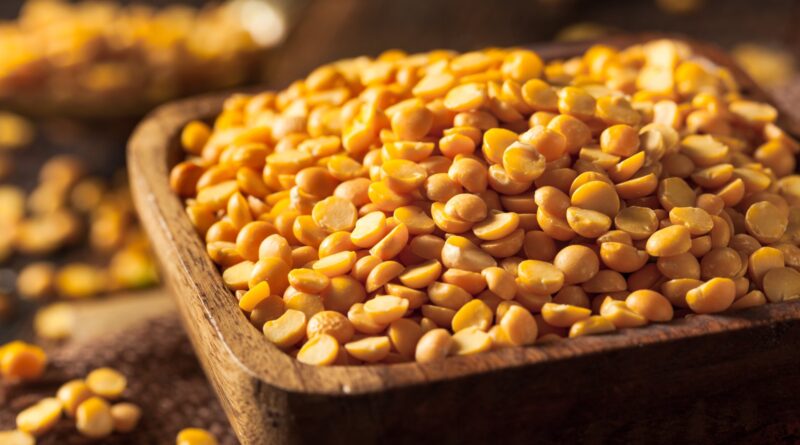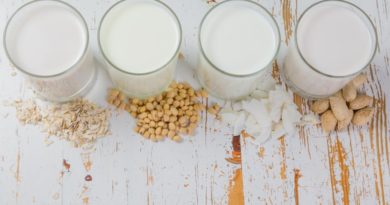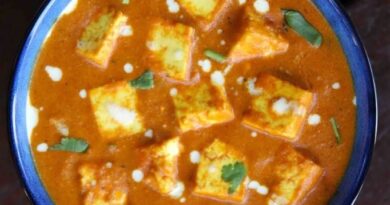Peas’ Pulse—– benefits and recipes
There are some special dishes in Indian cuisine which are beneficial for health along with taste. One such dose rich in medicinal properties, is peas’ pulse. It is full of nutritious elements, due to which the benefits of pea lentils increase innumerable. This lentil is a good source of protein and fibre. If peas are consumed regularly, then the risk of some serious diseases is averted.
In herb form, pea plant is a dicot plant bearing flowers. Green peas are removed from the pods of this plant, vacuumed and frozen. So that the peas do not spoil throughout the year. The peas are dried and broken into two halves. And it is given the form of pea dal.
These pulses are mainly produced in India in Uttar Pradesh, Madhya Pradesh, Odisha, Bihar, West Bengal, Maharashtra. The annual production of Matar Dal is 8.3 lakh tonnes. Along with this, India also exports peas to other countries. In this post we are sharing interesting information about Peas’ pulse.
Eating pea lentils rich in many nutrients gives more benefits. Now let us know what is the amount of nutrients available per 100 grams of pea lentils.
Eating pea lentils rich in many nutrients gives more benefits. Now let us know what is the amount of nutrients available per 100 grams of pea lentils.
• Calories – 125 kcal
• Fat – 0.39 g
• Protein – 8.34 g
• Fibre – 8.3 g
• Carbohydrates – 20.8 g
• Sugar – 2.9 g
• Calcium – 14 mg
• Magnesium – 36 mg
• Potassium – 362 mg
• Iron – 1.29 mg
• Sodium – 120 mg
• Zinc – 1 mg
Difference between green and yellow peas
Mainly two types of peas are seen.
1. Green Split Peas
2. Yellow Split Peas
Both pulses are made from the same plant, yet there is a slight difference between them.
• Both pulses are similar in terms of nutritional properties.
• The main difference between them lies in the colour and taste of lentils.
• The identity of green lentils is based on its green colour. Similarly, yellow lentils are also identified by colour.
• Green coloured peas have its main taste in lentils, which looks like a plant and is nutritious.
• The taste of yellow lentils is slightly sweet and palatable.
• Green lentils are good for heart health and muscle growth.
• Yellow lentils strengthen the digestive system.
Benefits of Peas’ Pulse
Both yellow and green lentils are beneficial. Minerals, vitamins and some useful mineral elements are found in these pulses. If pea lentils are consumed daily, then health benefits are obtained in removing some problems. Apart from pea lentils, pea curry, soup, etc.
(1) Beneficial in heart health
Eating pea lentils is beneficial for maintaining good heart health. The nutrients found in this lentil, fibre, potassium, tryptophan and amino acids are beneficial for the heart. It has amazing properties of cleansing the blood.
Consuming peas dal reduces the risk of blood pressure or any other heart disease. Pea lentils are useful for improving the function of blood vessels of the body.
(2) Reduces the risk of cancer
To reduce the risk of cancer, it is good to consume peas. Isoflavones (especially daidzein) are found in pea lentils. Which protects against dangerous diseases like cancer.
According to experts, in protecting against the disease of breast cancer and prostate cancer, isoflavones work to improve hormones. Eating pea lentils is beneficial for cancer sufferers.
(3) In keeping the sugar level right
Eating peas’ pulse is beneficial for diabetic patients. The evidence of sugar in the blood is controlled by eating pea lentils. It has anti-hyper glycaemic (blood sugar controlling) properties.
Also, the soluble fibre present in pea lentils prevents the rise in sugar levels. By consuming this pulse regularly, the sugar level remains under control. In diabetes, sweet things have to be avoided, and this kind of nutritious pulse has to satisfy hunger.
(4) Reduces the effect of sulphate
Sulphate is mostly used in industry. Consuming foods containing sulphites has adverse health effects. But by consuming pea lentils, the effect of sulphate is reduced. And physical harm can also be avoided.
Junk food contains high amount of sulphate, which is injurious to health. People with asthma are more likely to have elevated sulphate levels. But a mineral called molybdenum is found in pea lentils. Which reduces the sensitivity to sulphate.
(5) Beneficial in diseases of the large intestine
This disease causing rotting of the intestines has a bad effect on the digestive system. To reduce this disease, adopt proper eating habits and lifestyle habits. Consuming pea lentils is beneficial for irritable bowel syndrome sufferers.
Pea lentils have a high amount of soluble fibre. Which provides strength to fight digestive disorders of Irritable Bowel Syndrome(IBS). It also works to make digestion easier.
(6) Benefits in cholesterol control
Nutritious pea lentils have hyper-cholesterolemia (anti-cholesterol) properties, due to which cholesterol patients should eat peas. Cholesterol levels are kept under control by including matar dal in daily diet.
Due to the good amount of fibre, pea lentils are beneficial in cholesterol control. Matar dal is useful in reducing very low density lipoprotein cholesterol.
(7) Helpful in reducing weight
Peas’ pulse is beneficial for those who want to lose weight fast. If you consume pea lentils, pea vegetables, parathas and soups daily, then it gives a lot of benefits.
This lentil has a good amount of fibre, which is helpful in quenching hunger. And it has protein, vitamin, magnesium, zinc, iron and other nutrients. By which energy remains in the body throughout the day.
Matar Dal Recipe
Some dishes are made from peas full of taste and health properties. But today, we will tell about the famous Indian recipes made from peas.
(1) Delicious Green Peas
First number is the name of this specific recipe. Which is famous all over the world along with India. Green Pea Dal is very easy to make. So, let’s know step by step how to make this dal.
Materials
• Green peas
• tomatoes
• Green and red chilies
• coriander
• oil
• Desi Ghee
• cumin
• Ginger paste
• turmeric powder
• Garam Masala
• Salt
How to make?
• Put oil in the cooker and let it heat up. And fry cumin seeds in that oil. Then add asafoetida, turmeric and coriander powder and let it roast on low flame.
• After that add chopped tomatoes. Now add ginger and chili paste to it. After this, add each spice one by one.
• In the meantime, grind the peas coarsely.
• After a while, put the ground peas in the cooker, and add salt according to taste.
• Keep the cooker closed till 1 whistle comes.
• After a while turn off the gas. Add garam masala and green coriander to the dal and mix it well. After a while this dal will be completely cooked.
• Now your delicious green pea dal is ready. You can eat it with roti or rice.
(2) Spicy Bengali Matar Dal
The name of Matar Dal is also included in many delicious dishes of Bengal. The popular matar dal of Bengal is now famous all over India. So now know about the recipe of Spicy Bengali Matar Dal.
Materials
• Matar Dal
• Ghee
• Bay leaves
• Garlic and Ginger Paste
• tomatoes
• Chopped onion pieces
• Black pepper
• Chili Powder
• turmeric powder
• Garam Masala
• Salt
How to make?
• First heat the ghee in a non-stick pan. Then add ground green peas and bay leaves to it, let it roast on medium flame.
• Then put the paste of garlic and ginger in it. After this you have to add chopped onion and tomato pieces.
• After a while, pour some oil around the vessel in which you are making lentils. And add chili, turmeric powder and other spices.
• Later put freshly ground black pepper inside it.
• Put peas soaked in water and add salt according to taste, then close the pot.
• Now using a hand blender, blend it coarsely.
• Garnish coriander in this delicious spicy Bengali dal and serve hot immediately.




